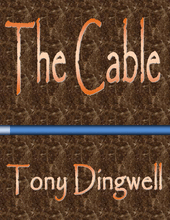 I just published my latest book Sasquatch. Right now, it is available only in the eBook formats from Amazon. For the next 3 days as a free eBook download, so take this opportunity to download it (and tell your friends).
I just published my latest book Sasquatch. Right now, it is available only in the eBook formats from Amazon. For the next 3 days as a free eBook download, so take this opportunity to download it (and tell your friends).
Story Synopsis
When he was a child, Hok’ee had a vision of his guardian animal, Sasquatch. Legend has it, boys who have Sasquatch, as their guardian will grow up to be great men. However, Hok’ee has no social status in his tribe. He lives with his mother as an outcast on the edge of the village. The colour of his skin and the shape of his eyes make him the target of bullies led by his long-time nemesis, Matwau, also known as Three Stones.
His mother tells him that if he is kind to others, Sasquatch will protect him. Hok’ee receives gifts of a knife and a bow from Sasquatch because he is good to others. He falls in love with a young girl, Onida, who has lost her father. To marry her, he must restore the status of his family, by bringing back the scalp of Sasquatch, his one true friend.
Excerpt
Chapter 1
It was my fifth spring. Mother was worried. I had spent the day in bed with a fever. She placed wet furs on my head, as she tried to bring my temperature down, while she waited for the medicine man.
Our wigwam built from spruce poles and birch bark. There were places on the bark where patches of green moss grew. It was warm and dry except when it rained hard in the spring. Water would run down the poles and drip on my head.
In the middle of the night, a creature entered our home. I was lifted up and cradled his arms. Its fur, cooled by the night air, was soothing to my bare skin. It pressed a clay cup to my lips, and in my slumber, I drank a sweet brew. I soon felt better and fell asleep as it rocked me in its arms.
When I woke the next morning, the fever was gone, and my mother was asleep next to my bed. I poked her. “Who was here last night?”
She opened her eyes and smiled. “You mean the medicine man, Hok’ee?”
It was not the face of the village medicine man. For one thing, he had a face with a nose and lips. This being only had two eyes and a thick, dark beard. There was nothing else.
“No, there was someone else here with a hairy face.”
She knelt beside me. “No one else was here last night. You must’ve had a vision of your guardian animal.”
I scratched my head. “A vision?”
“Most children are older and must fast for days in the wilderness to receive their visions.” She placed her hand on my shoulder. “Your guardian will help you find your path in life. What animal did you see?”
It occurred to me. “I don’t know. My guardian spirit was black and covered in fur. It held me and fed me from a cup like a human.”
She swallowed hard. “Sasquatch.”
Where to get your copy
Sasquatch is available as a Kindle eBook at Amazon.
![]()






